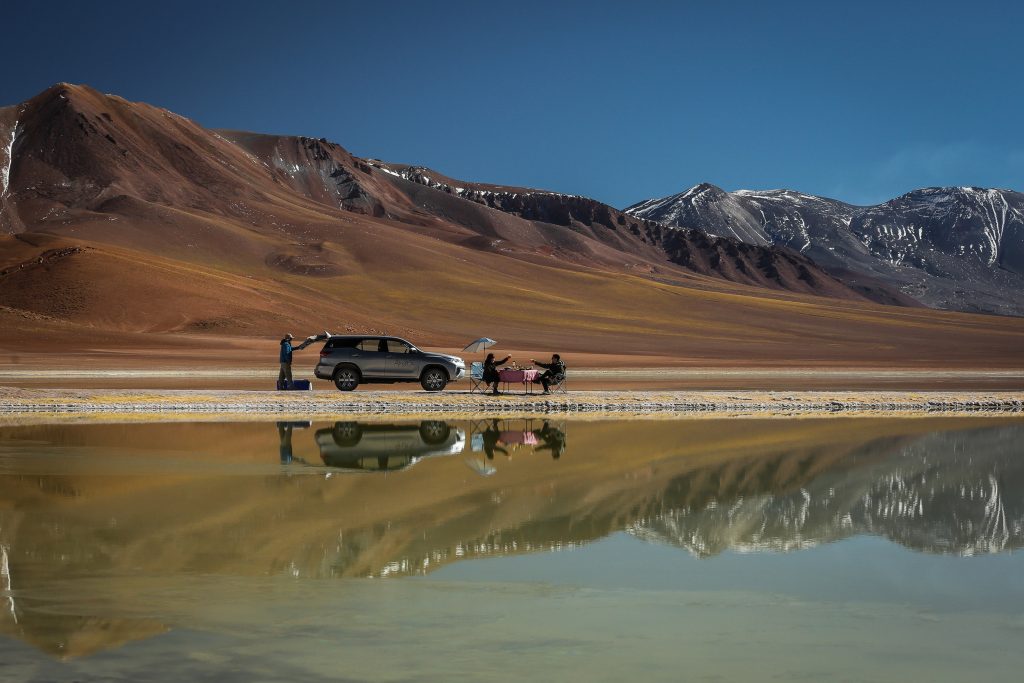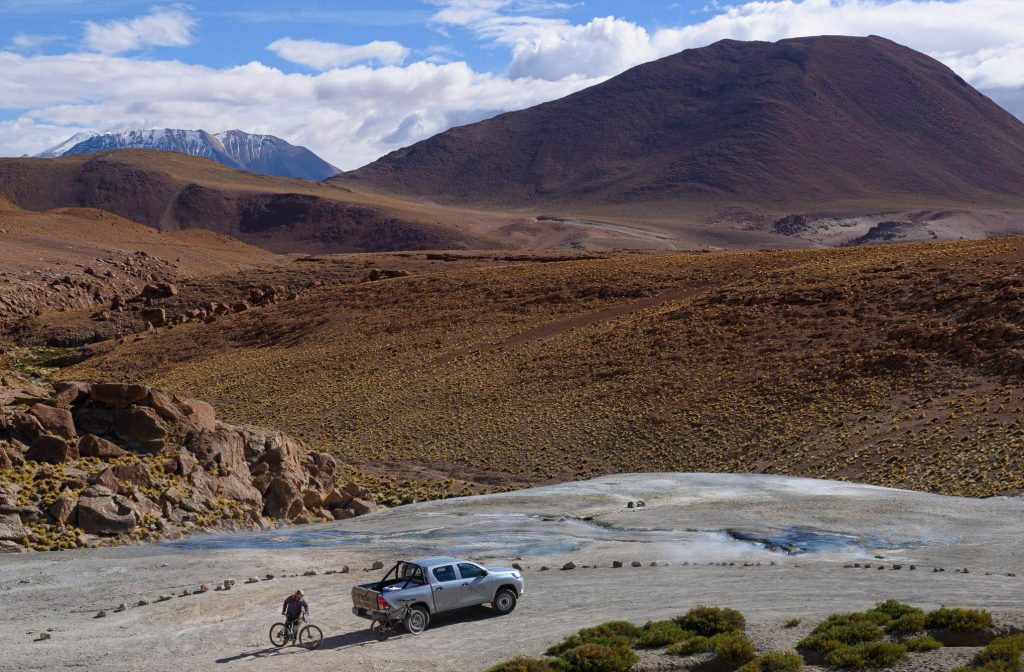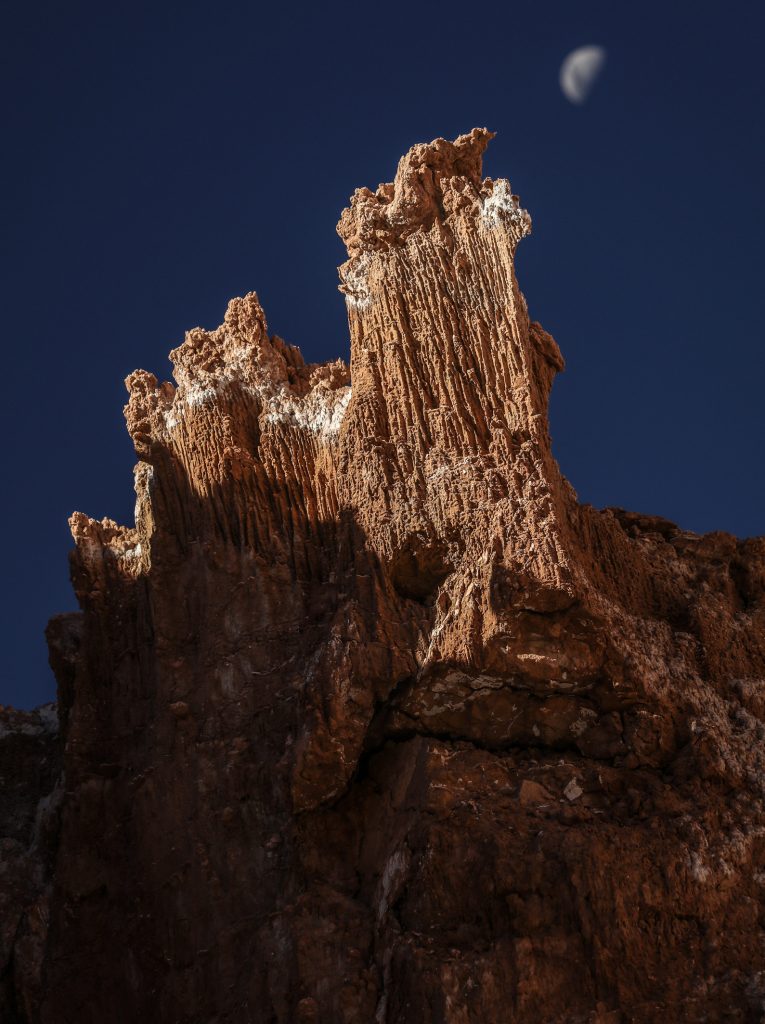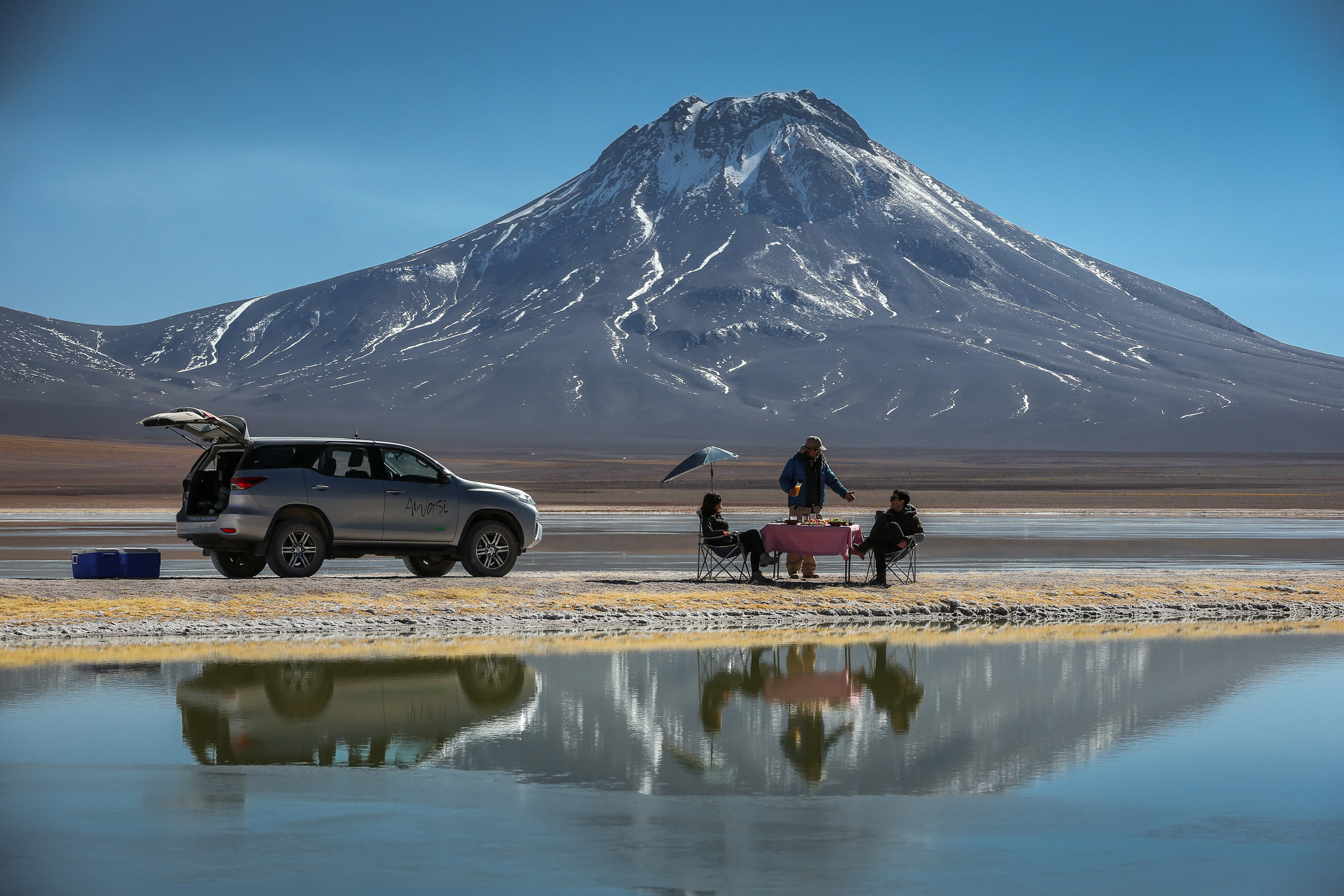Why visit Atacama Desert - The driest desert in the world

Make a trip to the Northern Chile desert, a territory of vast horizons, without shadows, where tourism coexists with avant-garde astronomical projects. San Pedro de Atacama is the capital and the starting point to explore its lunar valleys, geysers, salt flats, a sacred volcano and a lagoon where it is possible to float like in the Dead Sea, under a blue sky.
A great place for nature lovers to start or finish an adventure in Chile.
The Town of San Pedro de Atacama

San Pedro de Atacama is the most visited tourist destination in the country. However, before luxury hotels existed there and there were as many tourists on Caracoles Street as on Fifth Avenue, Atacama was a cult destination, for unconventional travelers, for romantic and adventurous hippies. And, in part, it still is. Only now the segment has widened to the point that this desolate portion of northern Chile, pure excess of salt, volcanoes and cracked earth, receives more tourists than the moai of Easter Island and the horns of Torres del Paine.
The largest oasis in the Atacama desert has a stable population of five thousand inhabitants, almost the same number of dogs that roam among the adobe houses – this earned it the nickname of San Pedro de Atacama – a bright white colonial church and, market paradox, one of the most expensive square meters in Chile in its most depopulated region with fewer services.
San Pedro has a tradition of backpackers and hostels, cloned adventure companies that offer sandboarding in the dunes, ascents to volcanoes and any activity to occupy the time in that great desert and a law that forces bars to close at midnight.
Some of the daily tours that can be done from San Pedro:
Cejar lagoon and Piedra lagoon
The Cejar lagoon is part of a hydrological basin originated by an accumulation of salts. The most curious thing is that, in the middle of this saline material (of high toxic content), an abundant swampy vegetation grew, called bofedal. These reeds, wild straw and pitches are enough to house small families of flamenco, ducks and seagulls.
In the Piedra lagoon, a few meters away, there are people instead of ducks. They are about ten bodies that barely protrude above the turquoise water, in a horizontal position. They float like corks. This phenomenon happens because our body has a lower density than that of water, whose salt concentration is very high.
Chaxa Lagoon
It is located in the eastern sector of the Atacama salt flat. The thick crusts of salt crunch as you walk along the trails that wind towards the viewpoints. What could once have been a high salinity lake that evaporated is today, they claim, the largest lithium reserve on the planet.
But the reason why they all come there is to get a belly of highland birds. There you can find the Chilean flamenco, the small parina and the large parina and at certain times of the year Puna plovers, the harrier, the Andean seagull and the Baird sandpiper also arrive. The recommendation is not to get too close because any alarm can scare away any of the birds that gather here.
Tatio Geysers
To get to the Tatio geysers, an ascent is made to 4,320 meters, at the foot of the volcano of the same name. You have to arrive before dawn, and wait for the thermal shock caused by the first rays of the sun with the icy cold of the mountain to raise the fumaroles with a large amount of steam. Its peak is between 6 and 7 in the morning. By the time the sun begins to warm, they no longer look the same.
There are signs that recommend not getting too close because you never know if someone is going to blow water out without warning. In addition, the surface around the geyser is very fragile and if it breaks and one falls into it, it can cause very severe burns.
The fumaroles originate from the contact of groundwater with hot rocks and emerge through fissures in the earth’s crust, reaching a temperature of 85 ° C and about ten meters high.
Moon Valley

Right where the Salar de Atacama and the Cordillera de la Sal meet, this great depression with the appearance of another planet that was once the axis of the dispute with Bolivia is discovered. Giant dunes, salt craters and hills that, due to erosion, resemble accordion bellows, outline a sculptural landscape.
The circuit goes from the Quebrada de Cari, the salt caves –not suitable for claustrophobics– and the Dune Mayor, ideal for climbing when evening falls, to the formation of the Tres Marías.
Stargarzing
A visit to the Atacama desert would not be complete without a stargazing evening of astronomy. Many hotels have their own observatories or can arrange stargazing evening tours. If you want to organize a private stargazing tour, send an email to info@ideasturisticas.com and our experts will send you all options available and help you with the planning of your tour.
Weather, climate and best time to visit
The best time to visit in San Pedro de Atacama in Chile is from January until April and September until December, when you will have a soft or pleasant temperature and none till limited rainfall. The highest average temperature in in San Pedro de Atacama is 20°C in January and the lowest is 11°C in July.
If you are planning on visiting San Pedro de Atacama, contact our team of local experts will help you plan a tailor-made trip based on your preferences and budget



